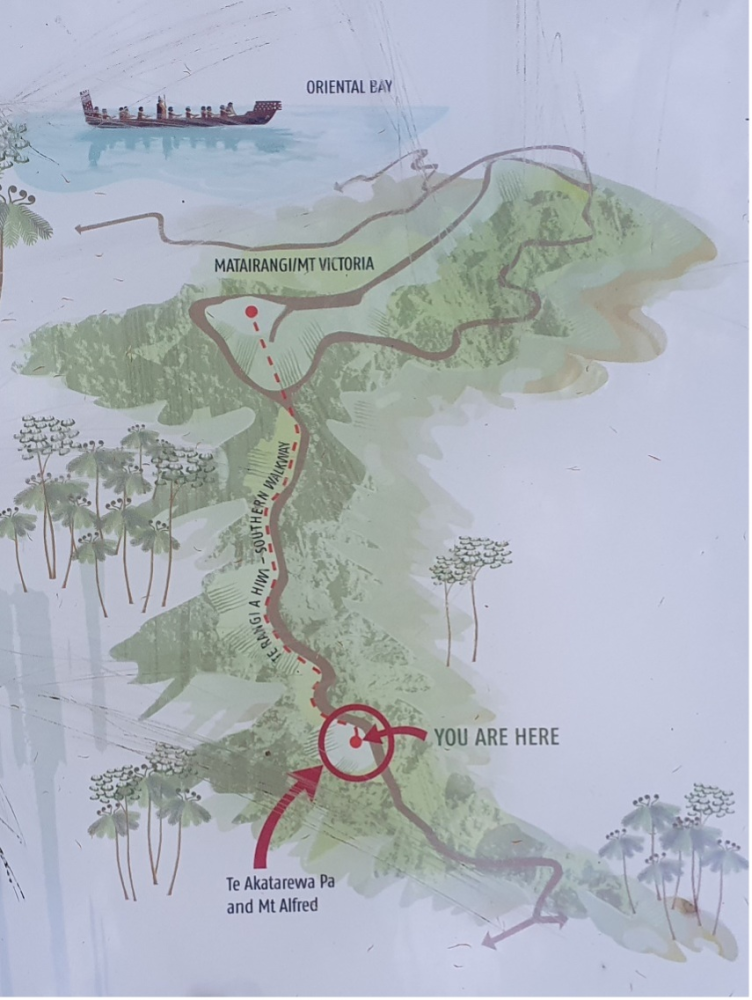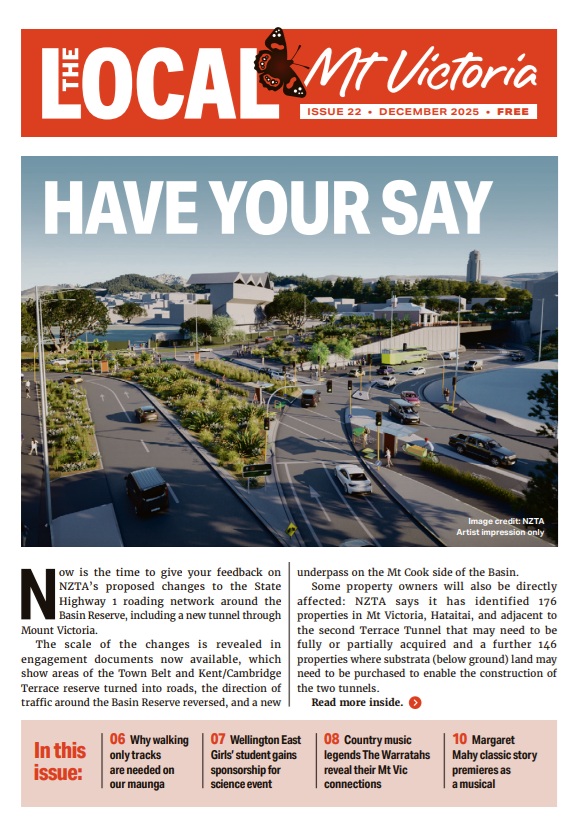Take a walk up the hill to visit a local heritage site. Joanna Newman from the Mt Victoria Historical Society explains.
 Coming up this month, 18 April is World Heritage Day, formally known as International Day for Monuments and Sites.
Coming up this month, 18 April is World Heritage Day, formally known as International Day for Monuments and Sites.
In Mt Victoria, we have a registered heritage site. It’s Te Akatarewa Pā, on the top of Matairangi/Mount Victoria – or, technically, Mt Alfred. (It’s registered under the WCC District Plan, Ngā Wāhi Tapu o te Māori or Sites and Areas of Significance to Māori).
There’s no evidence of it today but a Council plaque reminds us that the site was part of, or close to, Te Akatarewa Pā, a stockaded village inhabited by Ngai Tara. The pa was built here because it is one of the higher points of this ridgeline, known in pre-European times as Te Ranga a Hiwi – the hill ridge of Hiwi. Hiwi, who lived in the Akatarewa Pā, was the son of Hine Kiri, a famous chieftainess of Ngati Hinewai, hapu of Ngai Tara.
The ridgeline, Te Ranga a Hiwi, comprised a series of significant sites and was seen as a defensive line through the area, particularly to Ngai Tara. A series of pā or forts extended from Point Jerningham near the site of Waihirere Pā through Te Akatarewa Pā and out to Uruhau Pā (Island Bay) and Haewai (Houghton Bay).

Ngai Tara were the first recorded iwi in Te Whanganui a Tara but a number of tribal groups were living here at the beginning of the nineteenth century. It was still sparsely populated, but with complex relationships between groups as a result of tribal wars, conquest and migration.
If you haven’t found it yet, Mt Alfred is the small peak to the right of the saddle, if you’re taking the main track from Mt Vic to Hataitai. Head up the steps, then left at the top out towards one of the best views in town, and you’ll find the plaque.
OTHER STORIES





